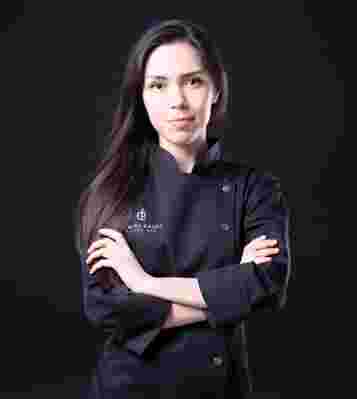Watch How This Architect-Turned-Pastry-Chef Makes Edible Buildings Into a Work of Art
Ukranian-born Dinara Kasko was working as an architect in Kharkov (a city in eastern Ukraine) when she began to experiment with baking as a side project. What started as a brief respite from architecture quickly became a new interpretation of it: Her cake and pastry designs took the form of buildings and highly stylized geometric models. After posting pictures of her creations on social media, Kasko received positive feedback from both the pastry and architecture world—deciding to ultimately become a full-time architectural pastry chef. She now teaches workshops around the world on her baking techniques and designed a line of architectural baking molds. Kasko tells Architectural Digest all about her transition from architecture to pastry artist.

Kasko began her career as an architect, before transitioning into creating pastries using 3-D technology.
Architectural Digest: How did your background in architecture become a career in pastry artistry?
Dinara Kasko: I worked as an architect-designer and a 3-D visualizer for several years, and in my spare time, I started to bake. I began with simple mousse cakes and glazes, but later tried to design my own molds so I could develop my unique style. I was just trying to make something new, and from there, people started calling me an architectural chef. After early success, I decided to commit to that role full-time.
AD: How has your architecture degree benefited you in your career as a pastry artist?
DK: From the moment I got into baking I decided to try to [bring] some distinct flare to it. I realized that appearance is as important as taste. Since I had a background in architecture and design, it was not a problem for me to make my own molds using a 3-D printing tool.
AD: Where do you draw design inspiration from?
DK: I come up with ideas for pastry designs based on modern architecture, art, nature, and objects I’m surrounded by. I'm interested in different design methods and geometric constructing principles; I like to experiment with varying objects and surfaces.
AD: What are some of your most memorable designs?
DK: I made a series of desserts using simple geometrical figures without any color or decor. They didn’t even look like they were edible. In fact, they looked more like art. But they were actually very delicious—I don’t forget about taste. In general, I prefer plain geometric shapes and sharp straight lines as an aesthetic. I tend not to use many colors. Instead, I prefer playing with contrast and minimalism.